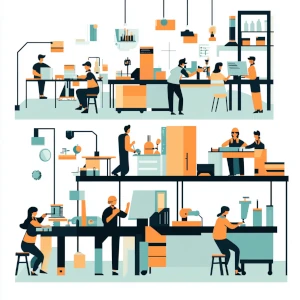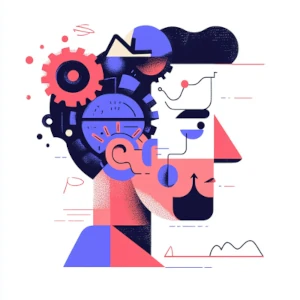Are your people committed to change and empowered to make change happen ?
How to support your people to make change happen

Introduction
If processes and systems are one half of the puzzle to having a successful ‘always-on’ change capability, then people is definitely the other half.
Change is not going to happen without people firmly committing to the change and being empowered to make the change. As part of the improvement team, you need to think about how to make this happen in your organization.
Imagine your improvement program is like trying to steer a rowing boat in a race and the other crews are your competitors and that you don’t have the willing co-operation of the crew! in this analogy, not only do you need to go in the right direction, you need to get there ahead of your competitors.
There are four critical people aspects to get right in this race:
- Effective workforce communication by leadership of the need for improvement (what direction and why) resulting in…
- High workforce engagement and effort (we all want to get there)
- Effective on-going capability building for everyone (the right training/coaching) resulting in…
- Strong change capabilities throughout the organisation (everyone knows how to make it happen)
Lets go through each of these, in detail, one-by-one.
Effective workforce communication by leadership of the need for improvement
A critical first workforce step in any Continuous Improvement or Transformation program is to communicate the need for improvement.

Not only does the message need to be clear, direct and to the point in establishing the need for change it also needs to be frequent.
Any organization, that misses this step will quickly wonder why their improvement program is unable to make any traction.
Common mistakes include:
- Little or infrequent communication given to lower organisational levels on either the need for change (goals/purpose/priorities) or progress towards the change goals;
- Some organizations might make an initial attempt to communicate the need for change but then don’t follow up and repeat the messaging.
- They make the incorrect assumption that the workforce fully understood the initial communication and are working toward the improvement goals even whilst giving them further communications on new issues that are also treated important.
- Additionally, the actual progress during implementation is not reported enough to the workforce so the workforce have little understanding of the overall position.
- Little or no senior leadership visibility in delivering the message; this is often an issue of logistics or cost.
- It’s relatively easy to communicate one or two levels down but senior leadership trying to reach everyone requires a lot of time both from the senior leadership and also lost workforce production time.
- However, if the workforce perceives a lack of senior leadership when delivering a change message then the natural implication is that the need for change is low priority…
Successfully communicating the need for change (and progress toward that change) requires:
- Strong, consistent communication given at all levels with the need for change heard frequently throughout the organisation ideally through multiple communication channels used (in person, online, email, townhalls); the improvement team needs to develop and implement a multi channel comms plan that supports the improvement program
- Improvement progress updates need to be continually sent out with progress available online instantly; the improvement team need to put in place communication channels to reach the workforce easily and continually
- Senior leadership seen frequently at the front line emphasizing the priority given to the change; the improvement team needs to do their part and be frequently seen whilst also underlining the importance of this visibility to senior leadership to do the same
As an example of strong effective, regular communication to the entire workforce, we’ve seen one organization devote an entire hour every Wednesday in a face-to-face townhall (so that senior leadership sees all shifts over a couple of weeks in a four-shift operation).
Strong Ownership and Growth Mindsets and Behaviours throughout the organization
Even with strong communication resulting in the workforce fully understanding the need for change there can still be a lack of high workforce engagement and effort allocated to the improvement program.

Ideally, everyone in your organization at all levels, has strong ownership and growth mindsets – moving fast to eliminate waste and constantly seeking to improve.
In practice, and in contrast to the ideal, some organizations may not even expect improvement from their workforce (or any contribution is ignored)
- This can be especially true in heavily regulated workforces with strong demarcations between roles; for example, in a production environment, operators may have strong views on what they are responsible for and what maintainers are responsible for…
- Organizations can often act in contradictory ways either through lack of resources or changing priorities. For example, an organization might request improvement ideas from the floor and then not act on them and fail to give feedback to the contributors. This is a clear path to a disenfranchised workforce…
The improvement team needs to break these barriers down.
Effective on-going capability building for everyone
People need to be empowered to make change. So not only should they have sufficient time to make the needed changes (addressed earlier), they also need training and coaching on change processes.
For example, how to successfully plan an initiative’s implementation or what is needed to sustain impact when the initiative is locked in.

Many organizations, neglect to give their workforce any training and little or no coaching is given by their line leaders.
Ideally, everyone in the organization is given basic training on the essence of the change processes. This allows them to be an initiative owner and drive an initiative through to completion. Anyone in workstream or team lead roles should be given extended training on all change processes (and not just the basics) as they will be expected to not only lead improvement teams but also give coaching on request or when needed.
Training everyone is time consuming – so how should the Improvement team approach this ?
Several approaches have been seen to work well including:
- Running ‘boot camps’ at the outset of an improvement program or transformation:
- These might run for several days and be quite intensive but are fast and well structured
- Will include a decent class size, allowing the improvement team to cover wide areas of the workforce in less passes (but catch up classes will also need to be run for the inevitable ‘no shows’ who are unable to attend the first planned sessions)
- Run ‘Field and Forum’ training over several weeks
- Forum sessions (the ‘theory’), which might be once a week, are held in a class setting and with a planned agenda
- Field work (the ‘practice’) is then done by attendees actually practicing what has been learnt in the classroom e.g., creating, planning and implementing an initiative
- The Field work can also be supported by active coaching by Improvement leads
- This is a great ‘adult learning’ methodology where emphasis is put on experiential learning i.e., practicing, hands-on the theory
- Provide in-depth online training enabling the workforce to learn in their own time and at their own convenience
Ideally, the training provided has recognised proficiency levels (including knowledge and practice) which can provide additional incentivization to complete the training.
Strong change capabilities throughout the organisation
An organization with an ‘always-on’ change capability needs to have strong wide-spread capabilities throughout the organization and not just in selected pockets (such as the Improvement team themselves!).

Assuming that capability building is widely and successfully provided and that change processes are widely understood, there can still be several common issues
- Little or no discipline in actually using the established change processes. Examples are varied:
- Stage gating: Initiatives are simply moved along the pipeline (from planning through to completion) by the initiative owners themselves with no consultation or agreement by key stakeholders even when not all work steps have been or KPIs have reached the expected target levels
- Implementation planning: Initiatives don’t have all the required information (work plans are missing, measures of success are not explicit), sustainability steps are missing
- Progress reviews: Reviews don’t happen at all, scheduled start time constantly changes, reviews start late, key people are late or don’t attend
- Systems not in place to support processes. For example:
- Implementation relies entirely on manual processes (e.g., spreadsheets)
- Organization is using multiple systems that do not integrate with each other (e.g., one for tracking ideas, another one for Continuous Improvement and another one for large initiatives with financial impact and none of these talk to each other – and, yes, we have seen this…)
- Insufficient initiative owner time or leadership time is actively allocated to improvement. It’s unrealistic to expected an already fully tasked employee to suddenly take on the role of an initiative owner that requires 50% or more of their time. Something is going to give – either the ‘day job’ or the new initiative. There are several ways of solving for this:
- Support the initiative owner with an additional resource for some of the tasks
- Backfill the initiative owner’s day job (e.g., for 3 months whilst the initiative is underway)
- Break the initiative down into stages, starting with the highest value stage, and take longer to complete all the initiative overall but at least bring benefits forwards where possible
For the first issue – process discipline – fixing this naturally falls on the Improvement team. However, this is impossible to fix without senior leadership support – so a first step in fixing change discipline is to enlist senior leadership support. First, make them aware of the issues and second, ensure they lead from the front on these processes and third, actively coach them when needed (to the point that they can then coach their teams as well).
This approach can be supplemented with using small process checks to ensure poor discipline is visually noticeable. Examples include:
- Attendance trackers (a sort of ‘name and shame’ approach) – red/green to denote if someone attended or not. Tracking tis week by week is quite effective to visibly show who are the repeat offenders. And, as a quick aside, attendance means that the person was there at the start (or within 2 minutes of start time)
- Process confirmations on the efficiency and effectiveness of progress reviews. This requires someone to manually review the meeting in real time and then give feedback on both the efficiency and effectiveness of the meeting; this is a great way of providing coaching to all the attendees in the progress reviews (e.g., what worked well, what didn’t and tips for improvement)
But ideally, if you have set-up your improvement processes correctly then some disciplines are self-reinforced. For example, if stage gating requires approval from select gate approvers at each gate then ideally the system you are using prevents the initiative being moved to the next stage without the explicit approval of the required gate approvers.
Which brings us to the second issue – systems not in place to support processes. Ideally, your systems both seamlessly talk to each other allowing them to share data and also reinforce your processes! (e.g., moving an initiative from one stage to the next stage can’t happen without appropriate approval).
Conclusion
In summary, if you can successfully address these people challenges, your organization should have a committed and empowered workforce able to deliver both Continuous Improvement and Transformations – like a well co-ordinated rowing crew moving faster than your competitors!
Further steps
People are one half of the puzzle to building and running an ‘always on’ change capability. The other half to consider is processes and how to build effective processes to manage your improvement pipeline at pace to make change happen.
See how our Lypta product can help you build and manage an ‘always-on’ change capability.
Lastly, all these insights can be downloaded as part of our complete ‘Challenges of Delivering’ pdf.
An 'always-on' change capability guide
The key components needed to enable your Continuous Improvement and Transformation Programs successfully deliver sustainable impact

